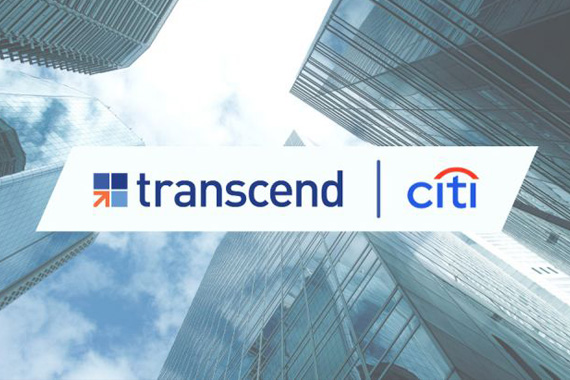A framework for build, buy or network in a changing market environment
Capital markets firms are faced with tough choices in their vendor and utility selection. But when should firms choose to partner with vendors, participate in industry utilities or insource development altogether? This article provides a framework for thinking through the options.
Capital markets have always been fast moving but seldom have the drivers of change come from so many directions at once. Both buy-side and sell-side firms are contending with simultaneous pressures to comply with new regulations, find new ways to generate revenues and to cut costs. What makes this environment even more challenging is the interaction between these competing goals. Implementing new functionality to comply with new regulations is not enough; systems and processes also need to adjust to accommodate changes to business models driven by those regulations. New business initiatives have historically gone through due diligence processes of varying degrees of strictness and now need to satisfy control questions from the outside. All this at a time when technology is evolving at a dizzying pace providing many options that were not viable until recently.
These challenges should not be perceived as all negative because the current environment presents many positive strategic opportunities. From established technology providers to the newest fintech start-ups, there is now an unprecedented choice of technology vendor options. There is a greater willingness than ever by firms to partner and develop industry solutions and to support, and in some cases create, new service providers. Meanwhile, at long last, the breadth of new functionality offered by these providers is matched by their depth of expertise. Solution providers frequently now offer not just “software” or a “service” but a complete solution package.
While capital markets players show increased willingness to turn to others for help in this challenging environment, there is also the recognition that the return on investment from internal technology resources needs to come from genuine differentiators in areas such as trading, data analytics, risk management and client interaction. In this world of both challenge and choice how can firms make the optimal choices without becoming stuck in analysis paralysis? At the most fundamental level they require a framework for deciding when to build, buy or network in collective enterprises.
Assessing internal capabilities
For a capital markets firm, the starting point for creating a framework is a realistic assessment of who they are, where they are going and what they are capable of. Some firms’ strengths may come from getting the basics right in areas such as operations or credit. Others may be innovators, creating new products, being the first into new markets or the first mover in the application of new technologies. Few, if any, firms can be good at everything and the effort of trying can be counterproductive. A realistic recognition of strengths and weaknesses is key. This analysis needs to be conducted front to back ⎼ including business functions, personnel and technology capabilities ⎼ to ensure the most holistic understanding is developed for optimal decision making.
The next step is for a firm to understand where it wants to go, or more often in the current changing environment, where they need to go. Banks have been constrained by the pressure to build up and conserve capital. As a consequence, many formerly key business areas have shrunk or been closed. On the buy-side, active fund management, a traditionally high margin business, is under threat. Business changes such as the growth in popularity of low-cost ETFs and the rise of the robo-advisor are having major impacts on business strategy, even where the basics are sound. Whether a business strategy is expansive or reactive, or simply aimed at preserving a successful franchise, it has a major impact on a framework for interaction with technology and service providers.
Lastly, firms need to assess the potential of help from external parties versus the strengths of internal capabilities. One of the most significant recent developments has been the willingness to develop shared industry resources. The general driver for this has been a recognition that many parts of a financial sector organization (including the relevant parts of infrastructure) are non-differentiating sources of costs rather than sources of competitive advantage. Though industry utilities have been around almost as long as computers, they have tended to focus on a limited set of functional areas.
The new generation of utilities are appearing across front, middle and back office. Some notable examples include: FIS’s Derivatives Processing Utility which grew out Barclays; Accenture (in collaboration with Broadridge) Post-Trade Processing that absorbed business functions from Societe Generale; and more traditional projects such as Symphony, a collaboration of 16 major financial firms building a secure communication network. Another change of emphasis has been from the traditional regulatory drivers behind major utilities to more commercial drivers. In some cases, superior internal performance may actually create the opportunity for revenue generation by using that capability as the basis for an industry utility.
Creating vendor partnerships – dependencies, commodities and customization
There has been a high degree of consolidation of financial software vendors in recent years. Firms such as FIS have grown through a long-running series of acquisitions (notably SunGard at the end of 2015), Broadridge Financial Solutions continues to make acquisitions, and UK based Misys recently merged with Canadian D+H to form Finastra. Consolidation has also been driven to some extent by internal procurement departments, which in many large financial services firms have worked to reduce the number of vendor relationships.
Despite these trends, there has been little reduction in choice as new fintech vendor firms grow. “Innovation” or “digital” teams across capital markets firms have worked to build bridges to the more promising start-ups. Choice in functionality has been matched by choice in the type of offerings. Capital markets software is often now available as part of a comprehensive package including cloud-based hosting, integration and maintenance. Newer fintech firms may not be as big as other vendors but they make up for it with speed of execution, nimbleness and innovation in driving complex challenges. They are able to adopt some of the latest technology innovations much more efficiently than their larger counterparts.
Add to that the management of staff to execute the business process, and one end of the software services spectrum is indistinguishable from a utility. Still, partnering with a vendor creates the bane of any project manager: more dependencies on outside parties can mean more risks, the potential for slow turnaround and reduced control. The alternative, however, isn’t foolproof. Good internal development teams and working in genuine partnership with a business can deliver changes rapidly that are focused on a business user’s needs. However, writing new software or even carrying out the full integration of a vendor package can be a high risk and high-cost strategy.
A good amount of the current enthusiasm for partnering with new fintech firms or joining industry utilities come from few key factors:
- The experience of difficulties rolling out new systems in financial firms’ increasingly controlled and complex environments.
- Many fintech firms can offer significantly deep domain and technical experience that may not be available internally.
- Many financial firms have difficulty in finding and retaining top technology talent as professionals have opted to pursue other opportunities in the broader technology industry or fintech space.
This can make it harder than ever to deliver a project to budget, with acceptable timescales and user expectations. Even where a firm shows expertise in one area of technology, it is unlikely to have breadth and depth of resources within its IT function to do everything to the same standard.
Commoditization or specialization
Depending on an honest assessment of the firm, its capabilities and business strategy, different choices may be made about buying, building or collaborating. If a capital markets firm’s need is for relatively standard, commoditized functionality, then the key factor becomes the gap between their offering and the firm’s needs. The wider the gap, the greater dependency on additional work being done and the greater the implementation risk. If a wide gap exists between the firm’s needs and the full range of offerings, it may be worth going back to basics and asking why its needs are so different to peers that make use of software packages or other services in the first place.
If one or more potential partners can provide the desired functionality, the characteristics of the vendors themselves need to be considered. Important variables will include vendor capabilities and skill sets in terms of business domain and technical innovation, reputation in the industry, and extensibility of architecture and offering. Many large vendors provide full feature functionality but it may be hard to customize whereas some newer fintech firms are leveraging more flexible technologies to make their offering able to meet various needs. If a supplier can provide functionality that can then be extended by an internal team, it may be an advantage as firms don’t always need to rely on the vendor for critical business changes.
If businesses require more innovative solutions than they are capable of mustering internally, it is likely that a partner will be of benefit. But the characteristics of the partner may become the most critical factor. Any partner chosen needs to have a genuine understanding of the firm’s needs. Genuine understanding comes from the combination of both technical skills and real-world experience. Suitable partners also need to understand the value of building a solution that is not just for today but has the flexibility to adapt to tomorrow’s challenges. Regulatory changes, such as the requirement to report securities finance trades under SFTR and margining of FX Forwards as a result of MiFID II, can have dramatic impacts. On the positive side, market changes or the rapid uptake of a new product can still lead to dramatic increases in volumes. In this case, firms need to look for a partner and not just a vendor because they may be able to help them assess their current capabilities and also help define the roadmap based on their understanding of the industry and regulatory landscape.
Utilities will continue to provide their own unique solutions, but the vantage point of a buyer or user should be: “is this process sufficiently commoditized that a utility can meet my needs?” Any truly commoditized process can be outsourced to a utility, while processes that offer or require differentiation should be managed internally by the firm. Firms may also need to have internal capabilities developed in-house or through a vendor to connect to the utility and take full advantage of their services. Utilities have a lot to offer, but firms need to be proactive in making the decision about what is a competitive advantage and what is a commodity service.
Creating a framework for understanding a capital markets firm’s capabilities and comparing the results to the vendor and utility landscape is the first step in deciding whether to build, buy or partner for solutions in today’s market. The catchphrase of outsourcing is easy; the hard part is ensuring that firms are building flexible partnerships for the long term. At Transcend Street, we find having a great product or solution is a good start but not enough to win the long term partnerships. Our clients reach out to us because of our team’s broad industry experience, thought leadership and our focus on execution and delivery. Our vision, its alignment for the client’s benefit, and our capacity to be a long term partner in their success is our crucial differentiating factor.
As technology becomes increasingly complex, it is imperative that firms conduct a holistic review of their own capabilities and strategically identify the right partners. Too often, firms focus on features and functionality comparisons across solution providers but not enough on critical internal assessments. In the brave new world, where profits are scarce, cost pressures are high and regulatory compliance is crucial, firms that can master this strategic balance of internal builds and strategic partnerships in the industry will have a significant competitive advantage.
This article was originally published on Securities Finance Monitor.







